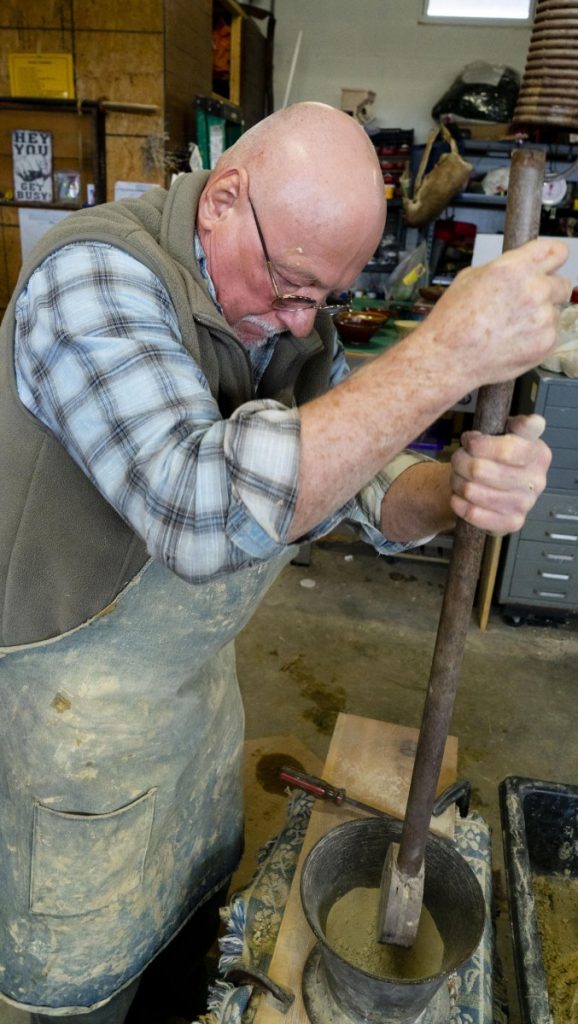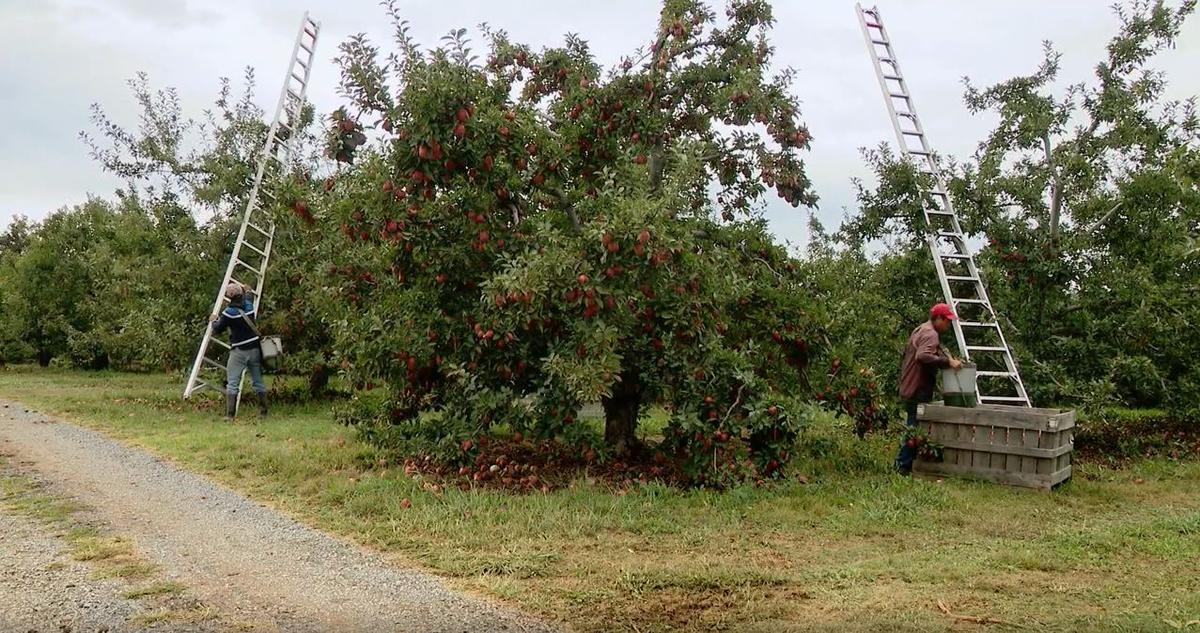In rural Preston County, West Virginia, potter Mel Sword’s house is located at the end of a gravel road, near a road called “Wildflower Way” and a creek that feeds into the Cheat River. His home nestles rolling fields of green grass, and behind that are mounds of dirt, clay that to Sword, is half the reason he bought this property about 10 years ago.
In a special report exploring folkways traditions, as part of the Inside Appalachia Folkways Project, West Virginia Public Broadcasting’s Caitlin Tan spent time with Sword to see how he is leaning on an old tradition to create modern-day pottery.

The Pile
Sword practices an old kind of pottery technique – digging and processing his own clay, a practice of pottery that Appalachian’s ancestors did out of necessity for many years. It was a way to create plates, bowls and other ceramic tools. It is rare for a potter to dig their own clay today, but Sword still does it as a way of preserving an old technique.
While building his home, he created a large clay mound, made entirely of the dirt that surrounds his home. The pile is about 7 feet tall, 15 feet wide.
This is not any ordinary looking mound of clay one typically sees — it looks more like heavy dirt. Technically, it is clay soil right now, but it is the timely process of turning that soil into a moldable product that potters had to do before the industry was commercialized.
“Pottery is just something that is a necessary thing to have in your life,” said Renee Margocee, a professional potter and executive director of the Tamarack Foundation for the Arts. She said in the early days in Appalachia, people had to source their own clay too, much like Sword. “And clay is something that can be found everywhere. And so you can literally use what is close at hand to create an object that is utilitarian.”
A Potter’s Love Story

Sword has been making pottery for much of his life, but he only started digging clay about 15 years ago. His reason, he says, was love. He took his then-girlfriend, now wife, camping outside of Morgantown.
“We were hiking through the rain, and I saw the clay and water coming off the hill. And I knew there was clay there so I just went over there a scooped a little up,” Sword recalls.
And he formed the clay into little round beads and left them in the campfire coals. And in the morning he said, “Here sweetie, here’s some West Virginia pearls.”
And that has become Sword’s side business in retirement. He is the person who can make you “West Virginia Pearls.”

The Process
Hand digging clay is labor-intensive. In fact, Margocee says in her training to become a potter she learned how to process clay, in an effort to appreciate the medium.

“There will be a lot of organic matter in it, like twigs, rocks and burs,” Margocee says.
To break down the larger pieces of dry clay, Sword uses what looks like a very large mortar and pestle he hand-made from a garage door spring, pipe and a few other things lying around. The contraption crushes chunky clay into fine sand.
He then puts the pulverized chunks of clay through a screen, which filters out twigs and rocks as clay sand is poured into a bucket.
Sword says it takes him about four hours to fill one five-gallon bucket.
“I’m the kind of person who likes to do monotonous jobs, and this is very monotonous,” he says.
Later, he adds water until it created a thick, muddy substance using a drill attached to an old paint stirrer to mix the clay together.
After several days Sword removes any excess water that does not absorb using a turkey baster.
The clay then sits in a mold that absorbs any remaining moisture. And after that, Sword’s ready to work.
Turning The Clay Into Something
Sword uses the clay to make pots, bowls and mugs, shaped and molded with a foot pedal-powered table — or a kick wheel. Although there are electric powered tables these days, that is not Sword’s style.
In his studio, the surface of the table spins around and around, much like a spool.
The hunk of red clay sits in the middle as Sword shapes it with his hands to make a mug.
He works year-round, and though he sells some of his work, he says it is not his objective. He says he just enjoys the process of it all.
Margocee suggests that every potter should try working with clay, like Sword, at least once. Although she admits that if one wants to sell pottery on a large scale, processing found clay is not the most efficient. However, it is still a part of our Appalachian history.
“There’s a romantic element to understanding it from beginning to end. And there’s extreme value in that,” Margocee says.
Sword hopes to invite students to his clay workshop, to show them his love for the process.

And, if you want to try to find some West Virginia clay, Sword suggests keeping your eyes peeled after a rainstorm, especially on muddy backroads. Look for red spines in the banks of rivers and roads. Who knows, maybe you will even be able to try your hand at a West Virginia Pearl for someone you love.
This story is part of the Inside Appalachia Folkways Reporting Project. Subscribe to the podcast to hear more stories of Appalachian folklife, arts, and culture.
This article was originally published by West Virginia Public Broadcasting.



